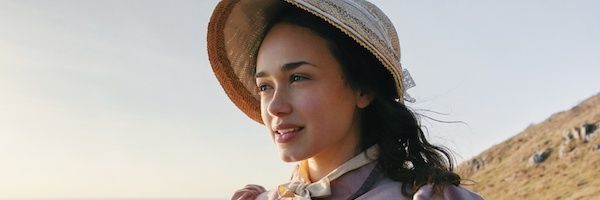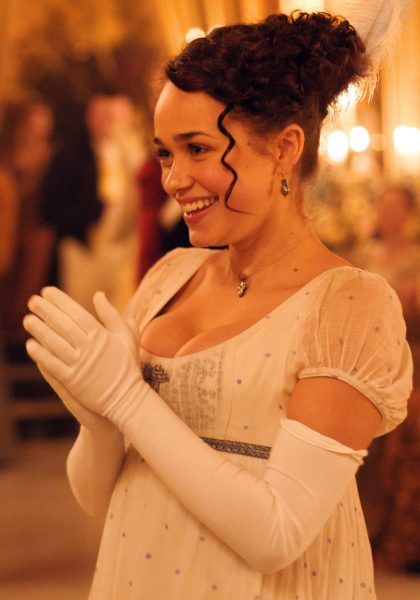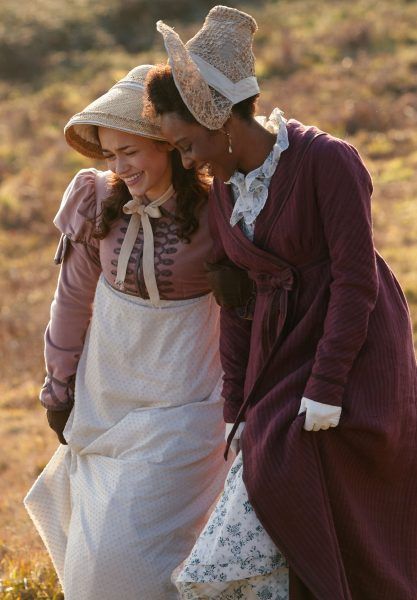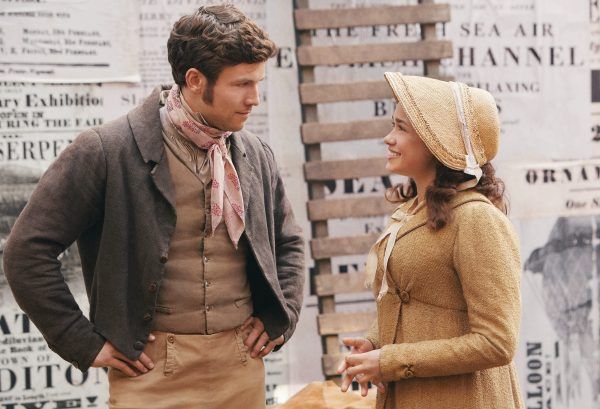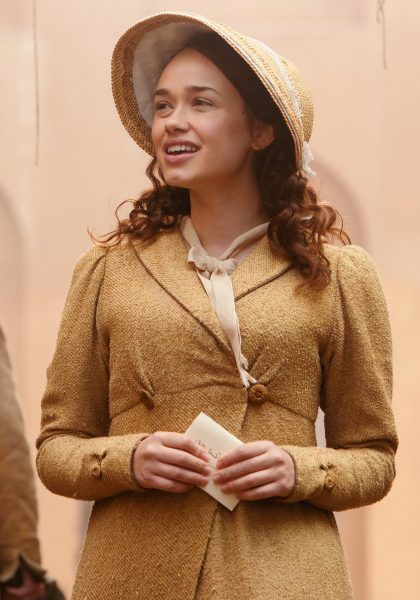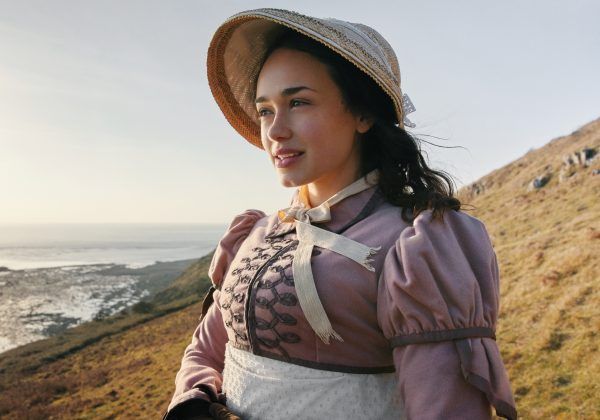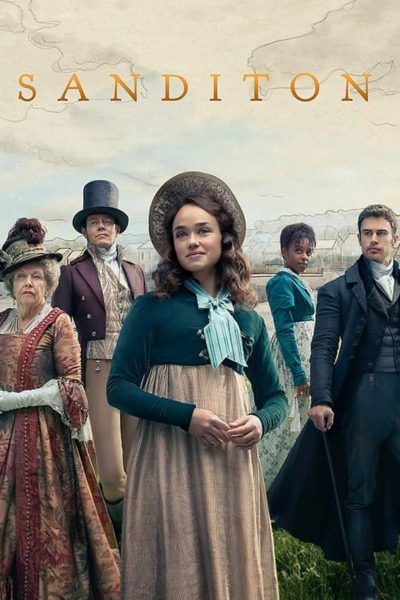Written only months before Jane Austen’s death in 1817, Sanditon, which has been beautifully turned into an eight-part series for ITV and Masterpiece on PBS by screenwriter Andrew Davies, tells the story of Charlotte Heywood (Rose Williams), a spirited and impulsive young woman who finds herself at the would-be coastal resort of Sanditon, where she meets the charming but distant Sidney Parker (Theo James). While Charlotte is on her own path of self-discovery, she also finds herself on a journey to love.
During this 1-on-1 interview with Collider, British actress Rose Williams talked about how she came to be a part of Sanditon, why this was such an irresistible role, what she loved about Charlotte Heywood, the relationship between Charlotte and Sidney, the fun of getting to do the dance sequences, the period costumes, why the world of Jane Austen is so enduring, and why this was such a hard character to say goodbye to. She also talked about why she loves watching TV, what she looks for in a project, and what attracted her to the horror film The Power.
Collider: This seems like such a great character to get to play. Was this just a totally irresistible role, for you?
ROSE WILLIAMS: Yes, exactly. It’s such a brilliant part because she’s headstrong and has got opinions, but she’s also young. There are also some really fun and funny moments in there and these brilliantly rich characters. I think each character just has a very strong arc and flavor. So, it was a massive no-brainer. I still can’t quite believe that I got the part.
How did you come to this?
WILLIAMS: It was really fortuitous, actually. The script came through for a different character, for Clara, but across the dates, I was doing a film, so I said, “I’m doing film. I can’t audition for Clara.” But, I thought it was a great script. And then, the film got pushed, so the space was open. In January, it came through again for Charlotte, and it all happened quite fast, actually. It was amazing. I heard about it on Friday, I did the tape across the weekend, and by Monday or Tuesday, it was happening. It was a bizarre turn of events, and I still can’t quite believe it all happened that way, but it was brilliant. Our first director, Olly [Blackburn], was fantastic. We had a long, almost three-hour conversation, when I first met him. He’s got such an extensive knowledge of the Regency period and had really strong ideas about how he wanted to guide the show. So, I was just supported by these really intelligent, creative people, from day one, and was empowered to play the part. The strength of the character was something that was talked about a lot, and not to have her be a damsel in distress. It really adamantly was the opposite of that. It was brilliant. I loved the role, very much. It was a great job.
What did you love about Charlotte, from the beginning, and what were the challenges of playing her?
WILLIAMS: What I loved about her, immediately, was that she was not focused on marriage. That she comes from a practical country upbringing and she’s got a connection to the land. She’s been working with her father, taking care of the farm and her brothers and sisters. She knows how to handle a hunting gun. The first time we see Charlotte, she’s holding a huge rifle. She’s not afraid to get stuck in. She comes from that kind of grounded background, which I think is great and interesting ‘cause we haven’t quite seen that slant in a Jane Austen character before. The initial challenge that I felt was, how can I relate to being in this world? But then, quite soon, I realized, from working with Olly Blackburn, that there are so many parallels between now and then. It was a really chaotic time. Things were changing. It was the forefront of the New Age. There are a lot of similarities between the Regency chaos and now. Through the research, I found those connections quite hard to relate to, at a time when women couldn’t legally sign a contract. How can I picture that as real because it’s so far from what I know, emotionally and with the cultural differences. That was the challenge.
One of the things that I love about this is that, a lot of times, period pieces can feel very serious, but this doesn’t. This has a lightness and a playfulness to it.
WILLIAMS: Yes. That’s the genius of Andrew Davies. He’s just so clever at pulling out the comedy and the sexuality that’s all there, between the lines, in Austen’s work, but he just puts a visual voice to that. It’s fun.
In the first episode, there’s a lot of dancing while you have to deliver dialogue. What was it like to do those scenes, and not get all tripped up?
WILLIAMS: It was complicated. Sammy [Murray], our choreographer, is the best of the best. That choreography was particularly intelligent, with the combination of dialogue and movement, that starts with me and Sidney, waltzing into a second dance in which I’m talking to Edward, and then there’s just enough steps and dialogue for Sidney and Miss Lambe to appear, to the millisecond, timed out for the camera work. It was a real dance between Rob Carter, our brilliant camera operator, Sammy’s choreography, and us. It was a challenge, but I really enjoyed that part of it. It was really fun. Olly Blackburn was the one that pushed for the folk music. That’s all relevant. It’s not modernized. That music, that was quite upbeat, was being enjoyed, at the time. The Celtic jig vibe was happening. When watching it, you could think that maybe they just put that in there to make it different, but actually, that kind of music and dance was happening, in that time period. So, I loved doing the dance sequences. For me, that’s a highlight. It was great fun. It was really hot and very sweaty in that room because it was a set built inside a studio with no ventilation, so it got really, really hot, and the costumes were really tight. It was very fun, but very challenging.
The period costumes are beautiful to look at, but probably not very much fun to wear. How was it to put those costumes on and work in them?
WILLIAMS: What I find so interesting about Regency fashion is that the dresses were flowing and they were inspired by ancient Grecian women, so they were cascading and quite sensual, with low necklines and the dresses were cut just under the bust, but underneath that was a very constricting corset. It was the freedom of the style, but then underneath, there was still this constriction, so it was this weird juxtaposition. The corsets were really different from corsets that I’ve worn before. Regency corsets come down really, really low, and then they push the bust up in a different shape to Victorian, which squishes everything down. The push-up bra effect of Regency is bizarrely more uncomfortable than everything being squished in, and it makes you stand different. It definitely puts you in a different world, wearing such specific shapes. I quite like the Spencer jackets, which are the short jackets. They’re not particularly comfortable, but I do enjoy the different world that the shape takes you and your body to. Our costume designer, Sam Perry, did such an amazing job of saying so much about the characters, but not in an in-your-face way. She used a lot of pastel and beachy tones to mirror the feel of the seaside town. For me, she went from earthy browns and knit textures, at the beginning, to a more sophisticated seaside blue palette. There’s a big journey with each of the characters, in what they wear.
Did that really help you to find the character and where she was at, at any given moment?
WILLIAMS: Yeah, that really helped me a lot, with the finding the emotional arc ‘cause there’s such a clear costume arc. But the thing that stayed the same, from start to end, was the corset.
Had you been a fan of Jane Austen, her stories and the movies based on them?
WILLIAMS: In truth, I’d seen the Ang Lee version of Sense and Sensibility, and the famous Andrew Davies Pride and Prejudice that everyone loves so much, but I hadn’t really done a deep dive into her literature until this job, and it really opened me up to a whole universe that I didn’t know existed, in such depth. I had a loose understanding of her message, but I didn’t understand her legacy, in depth. To really get a sense of how pioneering she was has been a real lovely education for me. It’s been great. It’s a world to go back to. Once you’ve read a bit and researched it, it becomes this comforting place to go back to. I feel like I now have a place to go. I like listening to audio books and re-watching the adaptations. It’s been really lovely, how it’s opened me up to her world. It’s such a testament to her genius that, to this day, there are people that still are so captivated by her stories and can find a safe place in her world.
What did you enjoy about the relationship between Charlotte and Sidney?
WILLIAMS: I like that it echoes her message of learning from the other, or the lover, and educating oneself through the mirror of opposition. It’s about realizing that first judgments and opinions aren’t always what you think they are, and people aren’t always what they seem. When you make a judgment about somebody, normally, that has something to do with something going on inside of yourself. It’s about accepting that you’ve made a mistake about the other person and just learning to see behind the first layer of the other person. Sidney and Charlotte’s arc is about realizing that there’s more to the other, and that they reflect something in the other that they need to address.
Where do you think Charlotte’s strength comes from?
WILLIAMS: I think she has a real edge to go out into the world, away from her village of Wellington. She sees the times changing and she wants to be a part of the new world, so to speak. She wants to have a voice and find her voice, travel and go beyond the limit of her world. She echoes Jane Austen, in the sense that they’re both from a country village, they’re both one of many siblings, and they both have big dreams of the world outside. She’s a little bit like Jane, in that way. Jane wrote 11 chapters before she died, and it really seemed like her writing in Sanditon was going in a more dynamic direction, exploring different kinds of characters, like these businessmen, which gave the impression that she was going somewhere different with her heroine, too, which is really cool.
When you play a character like this, that you clearly love so much and become attached to, is it hard to say goodbye to her?
WILLIAMS: Yeah. That’s a really good question. It really is. I just became so close to the crew and the cast. I was in those costumes, every day, for five months, so it really does blend into your own psyche. It took me a couple of weeks to wear my earrings, have my hair up in a bun, be in my comfortable clothing, and be like, “Oh, yeah, I’m Rose.” It really took awhile to shift back. It’s a strange emotional shift, when you come off of a job like that. It takes me awhile to phase out. There’s a piece of you and a piece of the character that just meet in this middle place, and it’s bizarre.
Are you someone who watches a lot of TV?
WILLIAMS: Yeah, I love TV. The culture of streaming services allows that, with so many options and so many places to go for great shows. There’s something really cozy, especially while filming, to get out of the character and decompress by dipping into a show and finding a happy place on a TV show.
What do you look for, in a project, when you’re trying to find the next thing?
WILLIAMS: For me, the joy of the job is to jump into different worlds, and explore different times and parts of yourself. Good writing is good writing. If there’s a great script with characters that you can connect to, then that’s what I’d go for. But I really enjoy jumping into completely different universes. I like to try to switch it up, where I can.
You also have The Power. What made you want to do that film?
WILLIAMS: It’s a British independent film, and it’s set in the early ‘70s in the East End. That’s horror, and it’s a female writer/director (Corinna Faith). I loved the script. I’ve been talking about it with her for a year, and she sent me great ‘70s horror references, and Japanese and Korean films. She had a very clear vision about how she wanted it to look and feel, tonally and visually, and I really liked her style. It’s dark and different, and is a completely different world. It’s set when they were back-ups in the East End because of the miner strikes, so it touches on class and abuse. It’s a really completely different vibe to Charlotte Heywood in Sanditon.
What kind of character are you playing?
WILLIAMS: She’s a young nurse. She’s grown up in an orphanage in the East End, in great poverty, and she’s trained to be a nurse. It’s her first night and her first shift, which is a night shift, in a hospital where there’s a black out. We shot that in an abandoned hospital in the East End of London. That should be really fun, in a scary way.
Sanditon airs on Sunday nights on Masterpiece on PBS.

